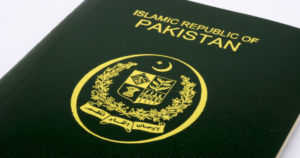
Prime Minister Shehbaz Sharif-led Pakistan government has decided to abolish the China-Pakistan Economic Corridor (CPEC) Authority. This decision came after the revelation that Chinese power producers have shut down 1,980 megawatts of production capacity due to non-clearance of their Rs. 300 billion dues.
The planning Minister Ahsam Iqbal has passed instructions to the concerned officials to begin the process of abolishing the authority. It may appear to some an out of the blue or sudden decision. But it is not so.
CPEC, from the very beginning, is being driven by Chinese strategic interests rather than Pakistan’s economic development. Pakistan’s benefits emanating from the CPEC at best could be seen as “incidental” if not “spoils of Chinese strategic games”. The CPEC has been very slow in implementation, at least in comparison to the artificially created fanfare about it. The cost-benefit analysis of the CPEC projects was never re-assuring. Still Pakistan government continued with the project to please China and use it as a bait against India.
The CPEC Authority had been created to expedite the implementation of the CPEC project. The first question that arises is that why CPEC projects, despite being flaunted as “game changer” were slow in implementation? The answer is not far to seek. The local people and many political leaders were never comfortable with the CPEC projects due to potential debt burden and overdependence on China it would create apart from the use of Chinese human resources for their execution. The contracts for CPEC projects signed with the Chinese companies were also viewed by many Pak analysts as highly skewed in favour of Chinese companies.
The CPEC Authority had been created to use the state power to push the projects despite people’s discontentment. The intention was loud and clear as the CPEC Authority was chaired by Asim Bajwa, a retired Lieutenant General.
The incumbent Pak Planning Minister called the CPEC Authority “a redundant organization with a huge waste of resources” which has “thwarted speedy implementation of the CPEC”. Although the decision to wind up the CPEC Authority was in line with the Pak Muslim League N’s old policy that was never in favour of establishing a parallel set up, the larger questions about the “desirability” and “economic viability” of the CPEC projects as a whole and their “debt sustainability” still remain unaddressed.
The fanfare and hype about $ 46 billion Chinese investments in the CPEC projects as proposed had been overblown and unrealistic. As conceived in the beginning, out of $ 46 billion stipulated for CPEC projects, about $ 34 billion were allocated for mega power projects, the rest going to other infrastructure projects. This was a highly skewed allocation pattern for a country which was still lacking in industrialization and infrastructure. The projections that implementation of the CPEC projects would add 2% to Pak GDP and a revenue stream would flow from it – beginning from $ 1.5 billion and reaching to $ 5 billion in 2022, belie the truth.
The reality was different from what was perceived and purveyed by Pak authorities about CPEC benefits. In fact Chinese debts were squeezing Pakistan’s already worsened finances and external payments situation. In 2021, Pakistan’s external payments obligations ballooned to $ 14 billion and nearly half of it was owed to Chinese commercial banks, largely for CPEC projects. Last year, the International Monetary Fund had warned that policy slippage and mounting contingent liabilities were undermining Pakistan’s public debt sustainability. The situation was not very different now. Although, Pakistan was set to receive an additional $ 2.0 billion from the IMF in its ongoing loan program after it assured the lender that prices of petrol and electricity would be increased and amnesty for the industrial sector would be revoked. The IMF conditionality was not easy to fulfill while the Pak economy was reeling under high inflation and rising cost of living as it may have a political backlash.
The question about the feasibility of the CPEC projects still remains. Despite serious claims and efforts to build and promote Gwadar as a global centre, business was scarce in the port city of Gwadar due to lack of infrastructure like roads and power. Naseer Khan Kashasi, The Chairman of the Gwadar Port Authority had rightly pointed out that despite Gwadar’s “strategic positioning” it had failed to bring business. The “touch and go” investment policy followed by Pakistan in case of the CPEC projects was flawed in economic reasoning. It had, however, pushed up the CPEC “notional” portfolio to $ 62 billion, the actual funds received for funding these projects were barely $ 12 billion. Even the power projects had failed to realize economic viability. The circular debt of these projects had gone upto a mammoth PKR 2.47 trillion.
CPEC was flawed in its very construct. Development was not a “knee-jerk” activity and takes its own time. It cannot be “imported” either as Pakistan policy makers think while banking on the CPEC. A realistic approach for Pakistan would be to diversify its own industrial sector and engage in trade and commerce on a wider scale and spectrum rather than just relying on China. As Chinese loans are commercial in nature, building infrastructure on these loans was dangerous. It was better to seek assistance from multilateral institutions like the World Bank or the ADB and rely on internal resources. Economic logic was easy, but Pakistan fails to see it, because its main purpose was not development, but keeping a counter to India.
Pakistan’s CPEC based development model needs re-thinking. Scrapping the CPEC Authority would not help Pakistan and save it from falling into debt trap and dependency created by China. It is time to learn from Sri Lankan mistakes.






